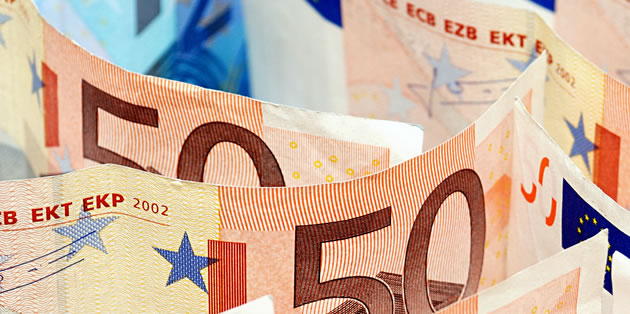Euro pound (EUR/GBP) fluctuates near multi-week lows amid cooling German producer prices
The euro pound (EUR/GBP) exchange rate is trading without a clear trajectory this morning following signs of rapidly easing inflation in the Eurozone’s largest economy.
At the time of writing the EUR/GBP exchange rate is trading at €0.8548, virtually unchanged from this morning’s opening rate.
Euro (EUR) wavers amid easing German PPI
The euro (EUR) is struggling to attract investor support this morning following the latest German producer prices data.
Germany’s producer price index (PPI) fell more than anticipated, cooling by 3.3% in April, rather than easing by market projections of 3.1%. Destatis, the German Federal Statistics Office, attributed the significant dip mainly to waning energy prices, as it fell to a fresh ten-month low.
Often used as a precursor to wider disinflation trends, an easing PPI in the Eurozone’s largest economy served to magnify surmounting expectations that the European Central Bank (ECB) could begin to lower interest rates as soon as next month.
UniCredit analysts noted:
‘Several ECB speakers have recently indicated that a rate cut in June is highly likely, while ECB action thereafter will depend on future data. Eurozone PMIs and ECB negotiated wages, to be published on Thursday, might shed further light in this respect.’
A lack of further releases throughout the session could see EUR exchange rates driven primarily by hopes that falling producer prices could feed through to consumer in subsequent months, in turn leaving speculations of looser ECB monetary policy to stifle the common currency.
Pound (GBP) subdued amid cooling grocery inflation
The pound (GBP) is trading without a clear trajectory this morning amid a lack of macroeconomic releases.
With fresh UK data in short supply, the latest retail insights from analytics group Kantar appear to be weighing on GBP exchange rates, amid reports that UK grocery inflation has fallen to its lowest level since October 2021.
As UK price pressure begin to ease following a prolonged period of continually rising grocery prices Fraser McKevitt, Head of Retail and Consumer Insight at Kantar, observes the potential ripple effects of easing grocery prices.
McKevitt stated:
‘Typically, an inflation rate of around 3% is when we start to see marked changes in consumers’ behaviour, with shoppers trading down to cheaper items when the rate goes above this line and vice versa when the rate drops.
However, after nearly two-and-a-half years of rapidly rising prices, it could take a bit longer for shoppers to unwind the habits they have learnt to help them manage the cost-of-living crisis.’
As markets anticipate the UK’s CPI print signs of preliminary, signs of easing grocery inflation may continue to undermine GBP exchange rates, deterring investor interest in the pound as the session progresses.
Euro pound exchange rate forecast: UK inflation in focus
Looking ahead, both headline and core UK inflation are forecast to have notably eased in April’s monthly figures, cooling to 2.6% and 3.4%, respectively. Should the data print as forecast, GBP may tumble amid ramped up Bank of England (BoE) rate cut bets.
In the Eurozone, a lack of immediate data could see EUR trade without a clear trajectory amid thin trading conditions.
